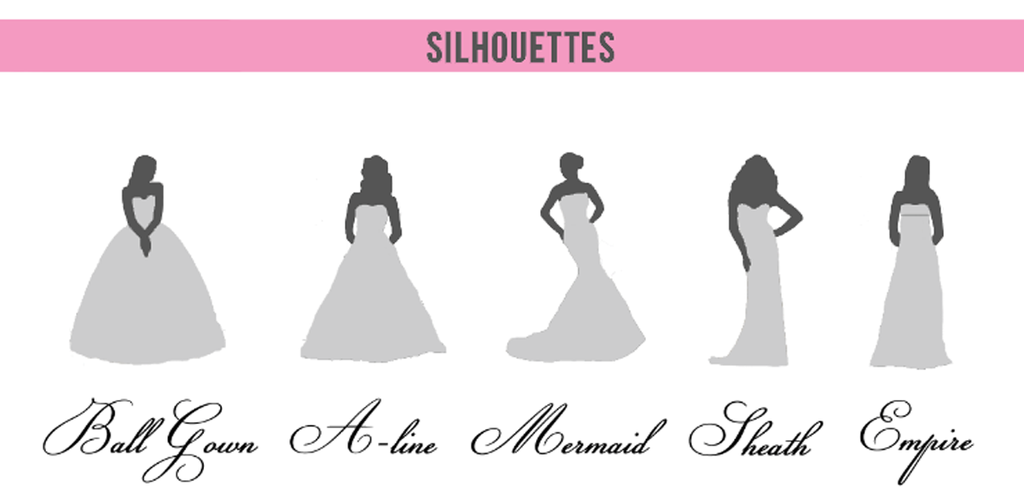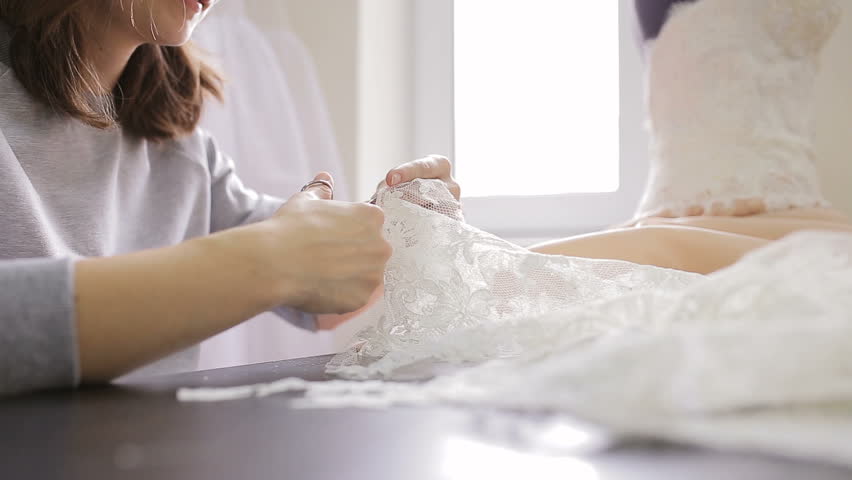How to Make a Wedding Dress: 8 Easy Steps on the Way to Your Dream Gown
Every day, more and more brides start to think about how to make a wedding gown with their own hands. It may happen because of various reasons. The most widespread are the extremely high prices and the lack of choice. Though the market of wedding dresses is overstuffed with thousands of various models, not every bride can find the dress, she has dreamt about.
When you design the dress yourself, you are free to turn your most incredible desires into life. However, if you haven’t sewn anything before, we recommend you to turn to a professional tailor. If you have some experience, take the chance and try to become a designer of your wedding dress.
So, let’s get started and consider how to make a wedding dress of your dreams, following 8 easy steps.
Contents
Step 1. Determine the Silhouette of Your Dress

Wedding dress shapes
First of all, you need to decide the dress of what silhouette you want. If you have tried on wedding dresses and know what the best option for you is, it’s amazing as you don’t have to spend time on thinking about the dress shape.
One of our previous articles contains the more detailed explanation of all possible silhouettes of wedding dresses. In short, the girls with hourglass bodies can allow everything, from mermaid to ball gown. Pear-shaped ladies look better in A-line and ball gowns. The brides with apple body usually prefer the empire waist dresses. The rectangular figures look good in trumpet dresses and the empire waist ones. The petit brides are astonishing in sheath silhouette.
Besides your body type, you also need to take into account your sewing skills. If you are an experienced professional, you will easily cope with any kind of the dress. However, if you want to make your own wedding dress, but are a novice in sewing, choose the simple shape and the fabrics, which it’s easy to deal with.
Step 2. Choose a Color

Shades of white wedding dresses
Basically, when you start to investigate the theme of the colors of wedding dresses, you discover that there are a great number of the hues of white. The most widespread are stark white, ivory and cream. Each hue suits different complexions and so, you need to investigate this issue thoroughly before buying the fabric.
Also, you can sew a wedding dress of any other color. Now, the pastel colors are very trendy, including the shades of powder, pink and peach. The most creative brides choose wedding gowns of non-traditional colors like red, purple or blue.
Step 3. Make a Sketch
How to make your own wedding dress without any sketch? It’s extremely hard and so, we recommend to draw the one. It’s necessary to sketch the front and back of the dress as well as mark all the details you’d like to add, like lace, bows, rhinestones etc.
Step 4. Determine the Fabric Type
The next step is to determine the type of the fabric suitable for your dress. In fact, each dress silhouette looks good with a certain type of fabrics. Thus, the empire waist gowns look astonishing with flowing fabrics like chiffon or silk, while the ball gowns often feature tulle.
The most widespread types of cloths for wedding dresses are chiffon, jersey, moire, organza, silk, satin, taffeta and tulle.
Step 5. Take Your Measurements
Recommendation: it’s better that you ask someone to help to make the measurements. It can be rather a challenge to do that alone. Moreover, the received data may be not exact.
In order to sew a wedding dress, you need to measure your bust, hips, waist and the distance between the collar and hem. When you measure the bust, put on the bra you plan to wear at your wedding day. While measuring the hips, place your heels together and stay relaxed.
When you take measurements of the waist, stay relaxed and don’t suck in your stomach. In order to take the right measurement of the dress length, put on the shoes, you will wear on your wedding day. After that, measure the distance between the collarbone and the place, you want the bottom of your dress to be.
Step 6. Choose the Pattern and Follow It
Making your own wedding dress without pattern is nonsense. There are two ways to get the pattern. If you aren’t a novice in sewing, you can create your own pattern and follow it. However, in the majority of cases, the future brides use pre-designed patterns. It’s very easy to work with them as they have the instructions and are created by professionals.
You don’t need any piece of advice on how to make wedding dress in order to understand that now, it’s time to cut the fabric, using pins to attach the pattern to the fabric. Also, take into account that 1.5 inches must be left for seams.
Step 7. Sew the Dress
Obviously, when you make a wedding dress, it’s very important to follow all the patterns strictly. Before starting to sew, pin the fabrics together in the necessary places in order to ensure that it stays in its place.
If you want to add texture to the dress to accentuate your body curves, you can fold and bend the fabric. Also, the majority of wedding dresses have the vertical princess seam.
Step 8. Make the Necessary Adjustments
Huh! The hardest work has been done and now it’s time to try on the gown. It’s possible that you will need to make a couple of adjustments in order to make the dress sit perfect.
In a nutshell, when we talk about how to make a wedding dress, everything seems to be rather easy. In reality, the things can be also easy if you follow all the instructions and know what to do. In fact, the sewing of your own wedding dress is an amazing chance to get exactly what you want. If you don’t feel strong enough to do that, you’d better allow the professionals do that for you.
